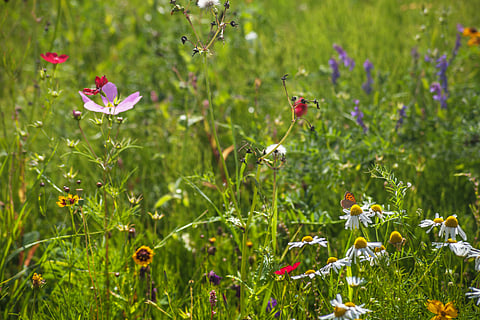

In August 2024, delegates will discuss the multilateral fund for sharing benefits from the use of digital sequence information, following the publication of the United Nations’ negotiation proposals.
Instead of obtaining genetic material directly from the field in the form of specimens, industry has increasingly relied on nucleic acid sequences available in open-source databases. This has allowed them to avoid sharing benefits with communities that have protected the resource for generations.
The requirement to share benefits is one of the three main tenets of the Convention on Biological Diversity (CBD). The convention makes no recommendation on what should be done if only genetic material is used. CBD members have attempted to solve this conundrum for the better part of a decade.
Plant, animal and microbe genetic material are all examples of digital sequence information (DSI). There is currently no internationally agreed-upon definition of DSI and its scope may include other dematerialised genetic resources, such as protein sequence data.
The decision made by the DSI intergovernmental negotiating group would also guide discussion of similar multilateral funds under consideration by the Food and Agriculture Organization under its International Treaty on Plant Genetic Resources for Food and Agriculture, as well as the World Health Organization’s Pandemic Treaty.
At the UN Convention on Biological Diversity’s 15th Conference of the Parties (COP15), held in December 2022, the parties pledged a new multilateral mechanism in which industry could contribute to a global fund that would be used to support nature conservation and sustainable use, including related activities of Indigenous Peoples and Local Communities, as well as building capacity worldwide to generate and use DSI.
According to the UN documents released July 1, 2024, even a small percentage of revenue from products such as drugs, cosmetics and agricultural biotechnology would be worth billions of dollars.
Sectors that depend most on DSI generate anywhere from one to a few trillion dollars annually point out Co-Chairs of the negotiations, Mphatso Kalemba of Malawi and William Lockhart of the UK. Just 0.1 per cent of $1 trillion would yield 1 billion for the global fund and 1 per cent would amount to $10 billion, they added.
It is hoped that while all companies using DSI would contribute to the fund, the main focus would be on large and transnational producers or companies.
There are concerns that the contribution may have a negative impact on business activity and consumer spending.
The documents mentioned that contributions should be “proportionate and reasonable, in the sense that businesses are not burdened with unsustainable costs and that additional costs are not so significant that they are passed through to consumers in a way that might generate new inflationary pressures.”
It must also be determined whether contributions will be made when the genetic sequence is sourced or when the product created using it is released to the market. The disbursement mechanism would also be discussed at the meeting.
“Until now, users of information on genetic resources have shared little of the profits generated from their use,” says David Cooper, CBD’s acting executive secretary.
“These documents consider the many questions and challenges ahead and propose some options for the mechanism’s efficient, effective operation, including a new fund that could support those who are protecting biodiversity around the world, especially indigenous peoples and local communities around the world,” he added.
The proposals would be discussed first in Montreal August 12-16 and then finally the decision is likely to be taken at the UN Biodiversity Conference (COP 16) in Colombia between October 21 and November 1.